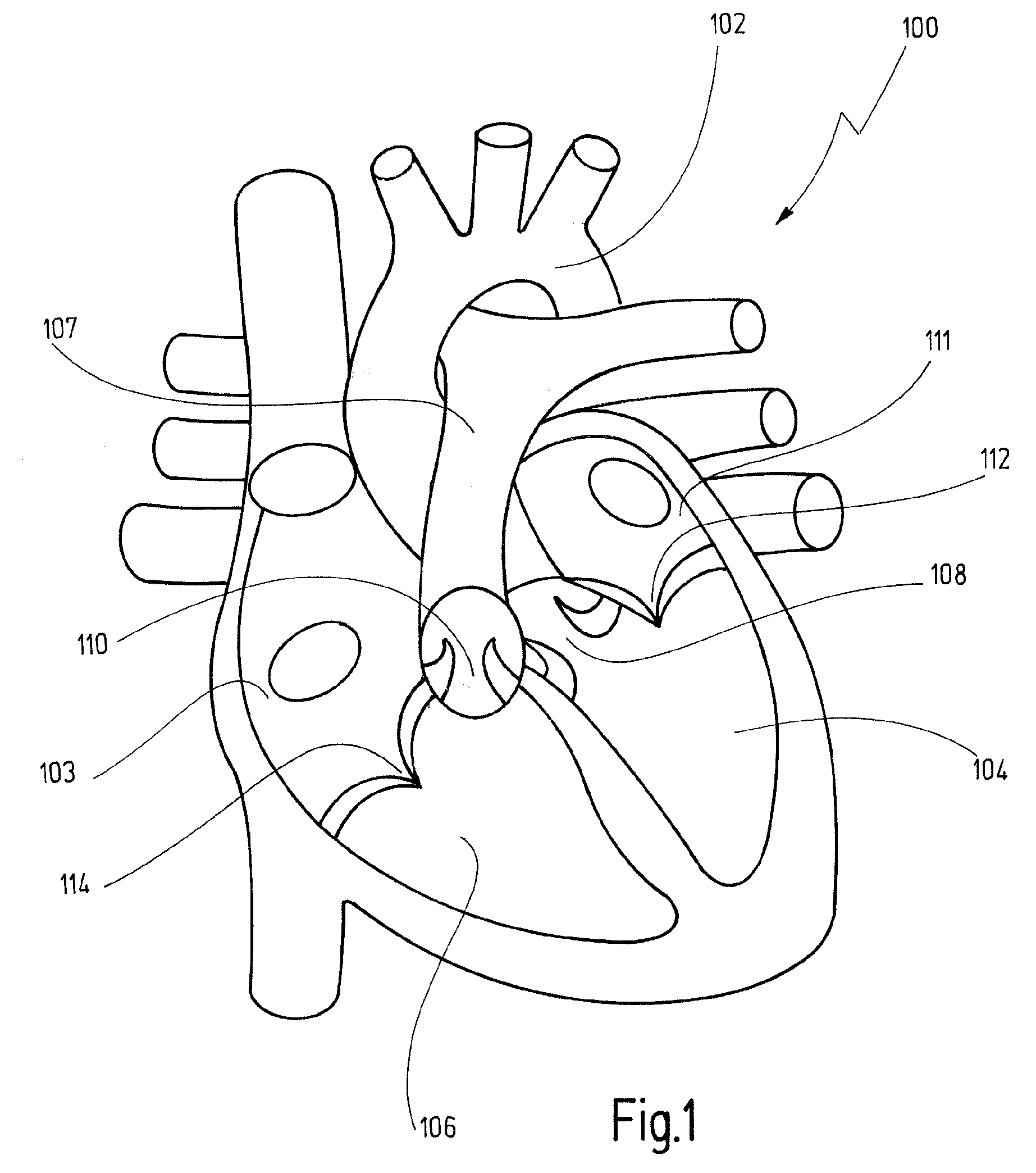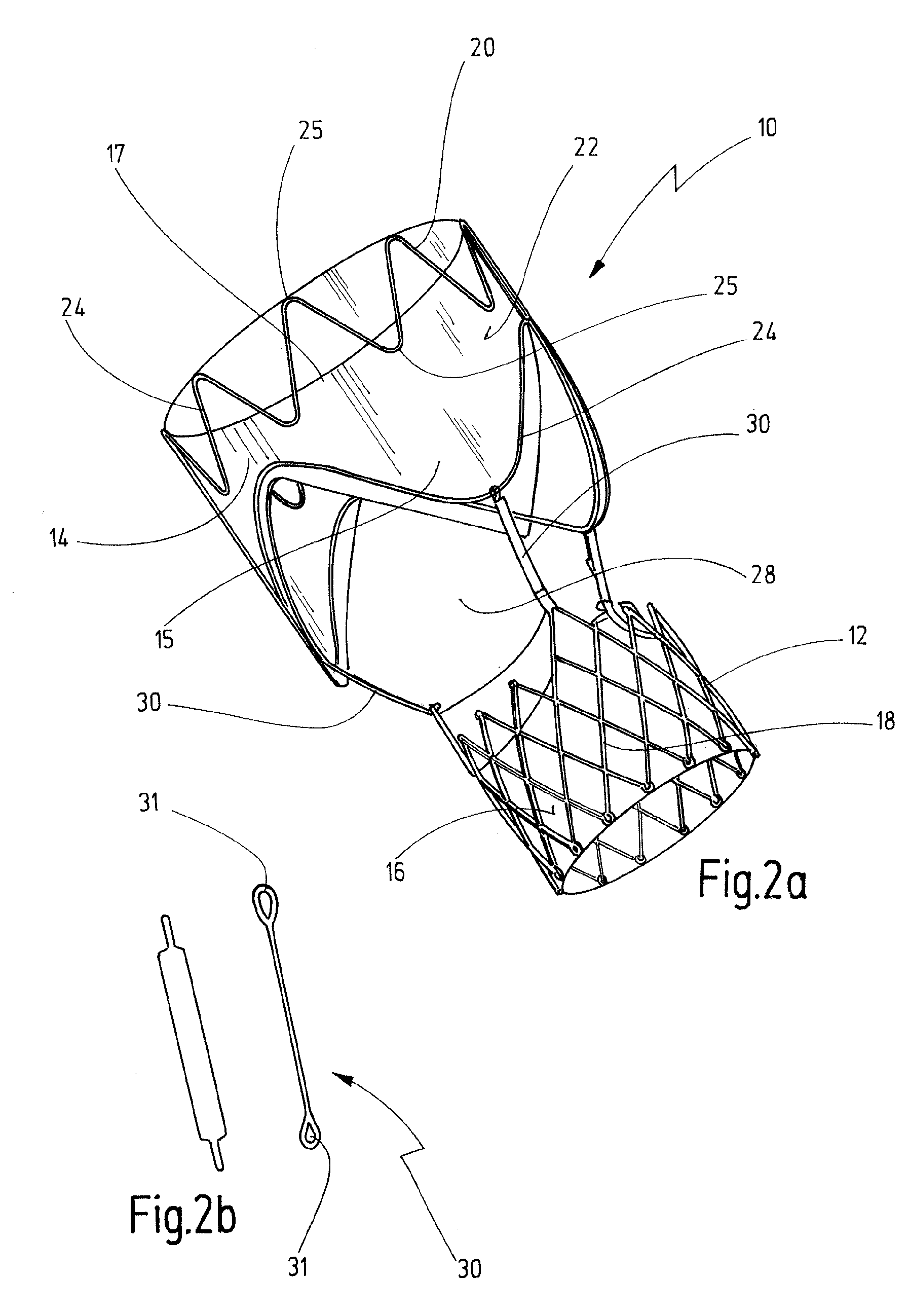Cardiac valve prosthesis system
a prosthesis system and valve technology, applied in the field of cardiac valve prosthesis systems, can solve the problems of obstructing blood flow out of the heart, valves can become partially shut, valves can become leaky,
- Summary
- Abstract
- Description
- Claims
- Application Information
AI Technical Summary
Benefits of technology
Problems solved by technology
Method used
Image
Examples
Embodiment Construction
[0060]In FIG. 1, reference number 100 designates a human heart, with the aorta indicated with 102, the left ventricle with 104 and the right ventricle with 106. The four valves of the heart 100 are the aortic valve 108, lying between the left ventricle 104 and the aorta 102, the pulmonic valve 110, lying between the right ventricle 106 and the pulmonary artery 107, the mitral valve 112, lying between the left ventricle 104 and the left atrium 111, and the tricuspid valve 114, lying between the right atrium 113 and the right ventricle 106.
[0061]When during ventricular systole the pressure in the left ventricle 104 rises above the pressure in the aorta 102, the aortic valve 108 opens, allowing blood to exit the left ventricle 104 into the aorta 102. When ventricular systole ends, pressure in the left ventricle 104 rapidly decreases, whereby the aortic pressure forces the aortic valve 108 to close.
[0062]In patients with a diseased and / or malfunctioning aortic valve 108, the valve 108 h...
PUM
| Property | Measurement | Unit |
|---|---|---|
| structures | aaaaa | aaaaa |
| flexible | aaaaa | aaaaa |
| shape- | aaaaa | aaaaa |
Abstract
Description
Claims
Application Information
 Login to View More
Login to View More - R&D
- Intellectual Property
- Life Sciences
- Materials
- Tech Scout
- Unparalleled Data Quality
- Higher Quality Content
- 60% Fewer Hallucinations
Browse by: Latest US Patents, China's latest patents, Technical Efficacy Thesaurus, Application Domain, Technology Topic, Popular Technical Reports.
© 2025 PatSnap. All rights reserved.Legal|Privacy policy|Modern Slavery Act Transparency Statement|Sitemap|About US| Contact US: help@patsnap.com



